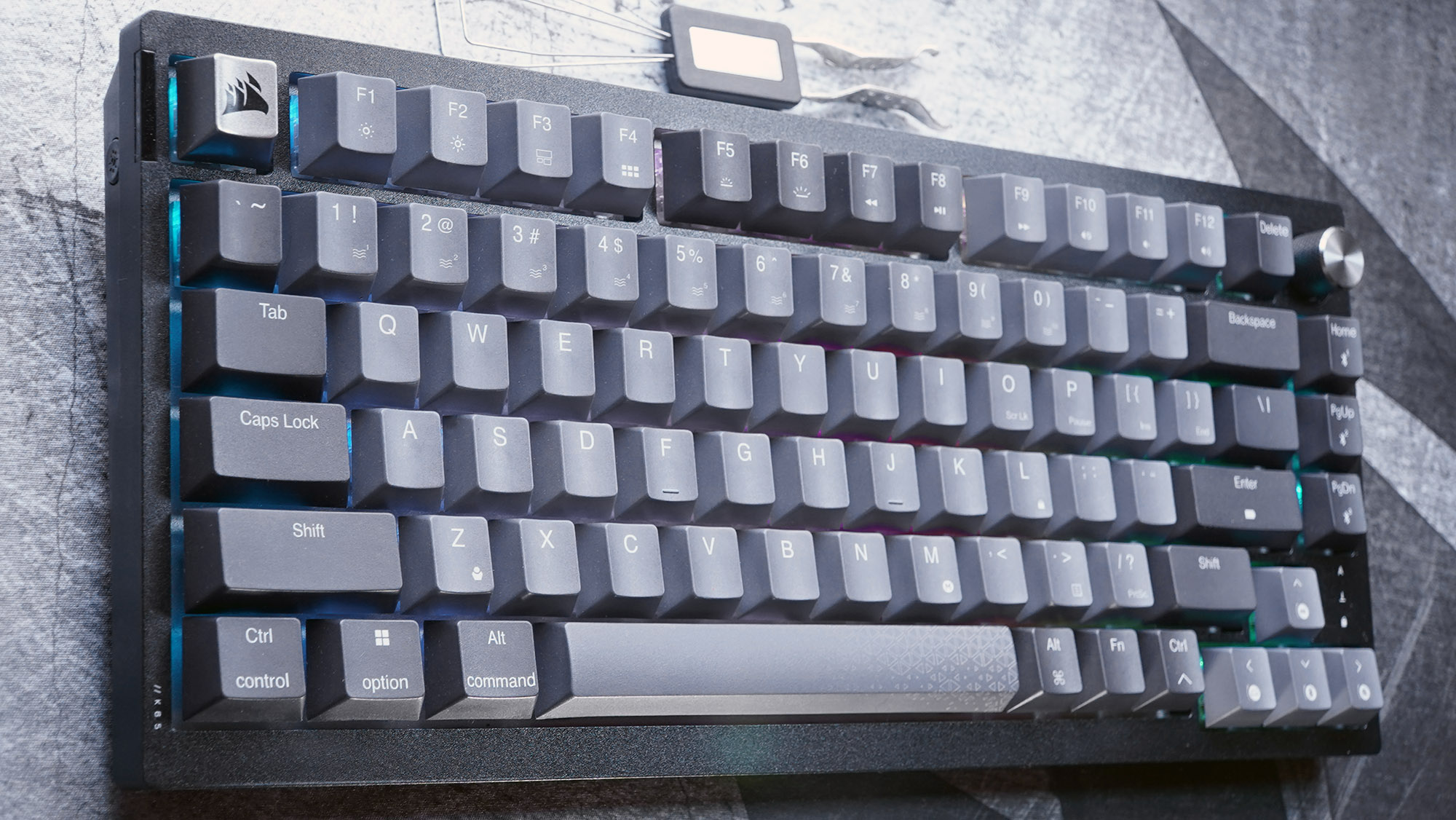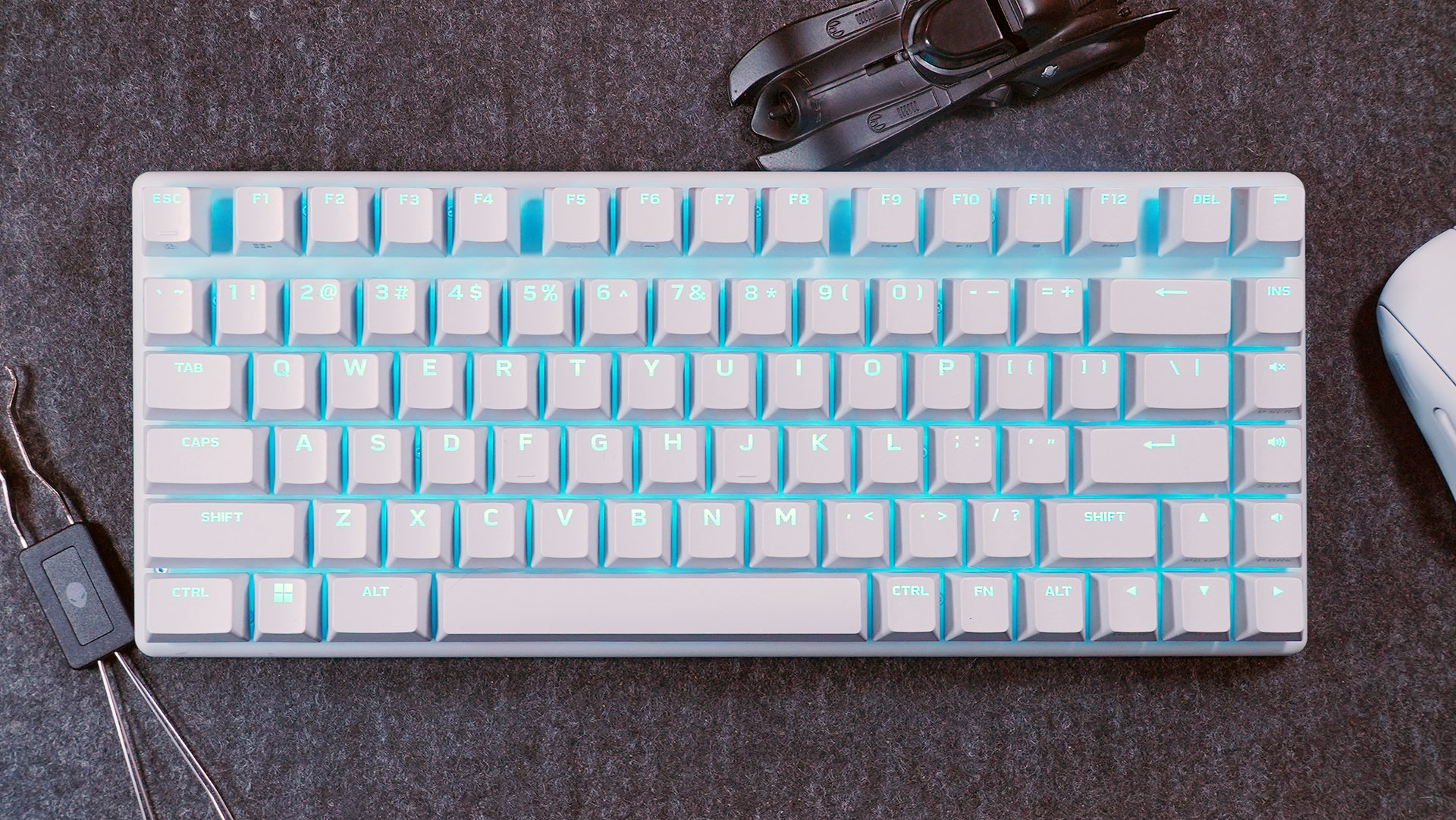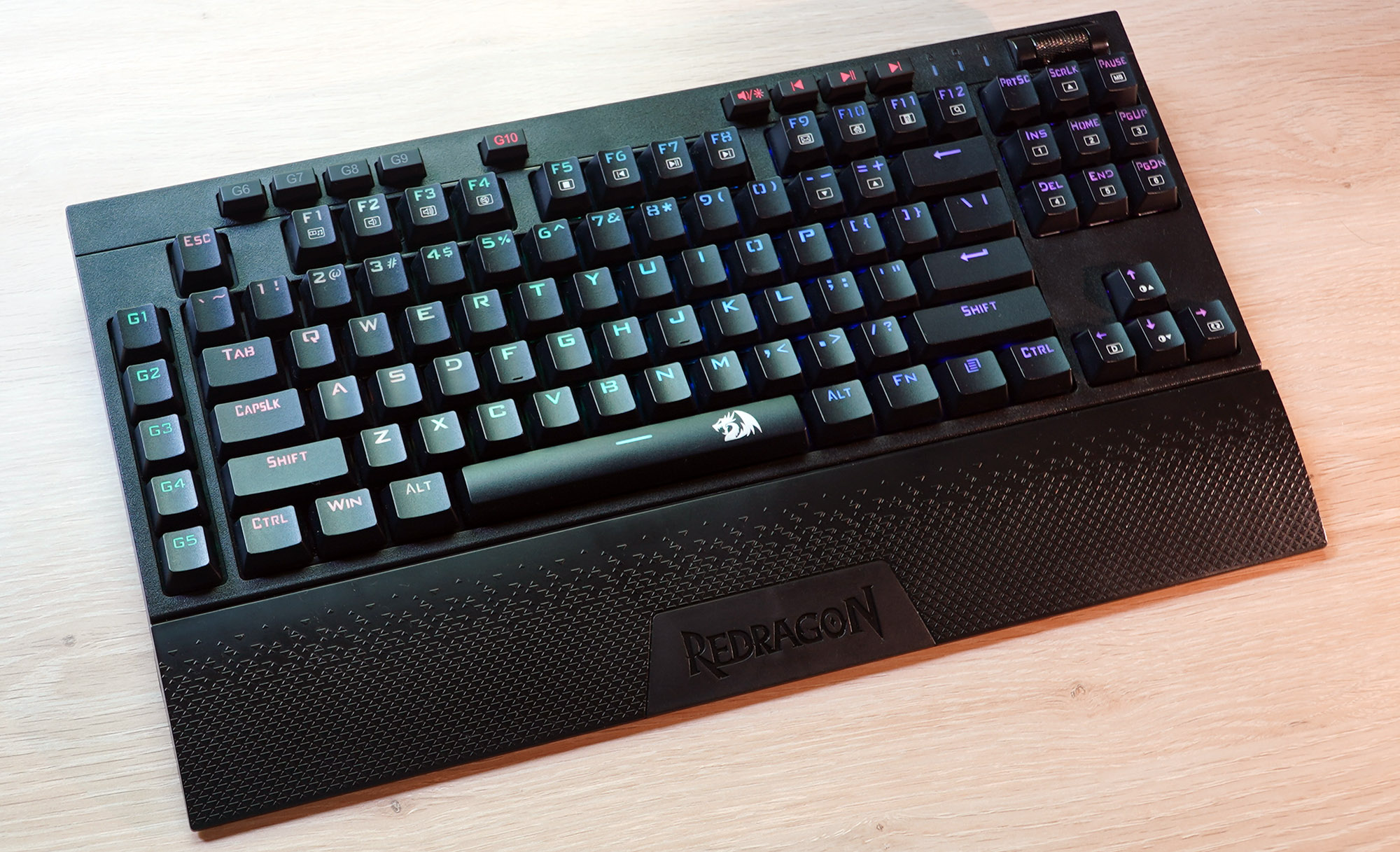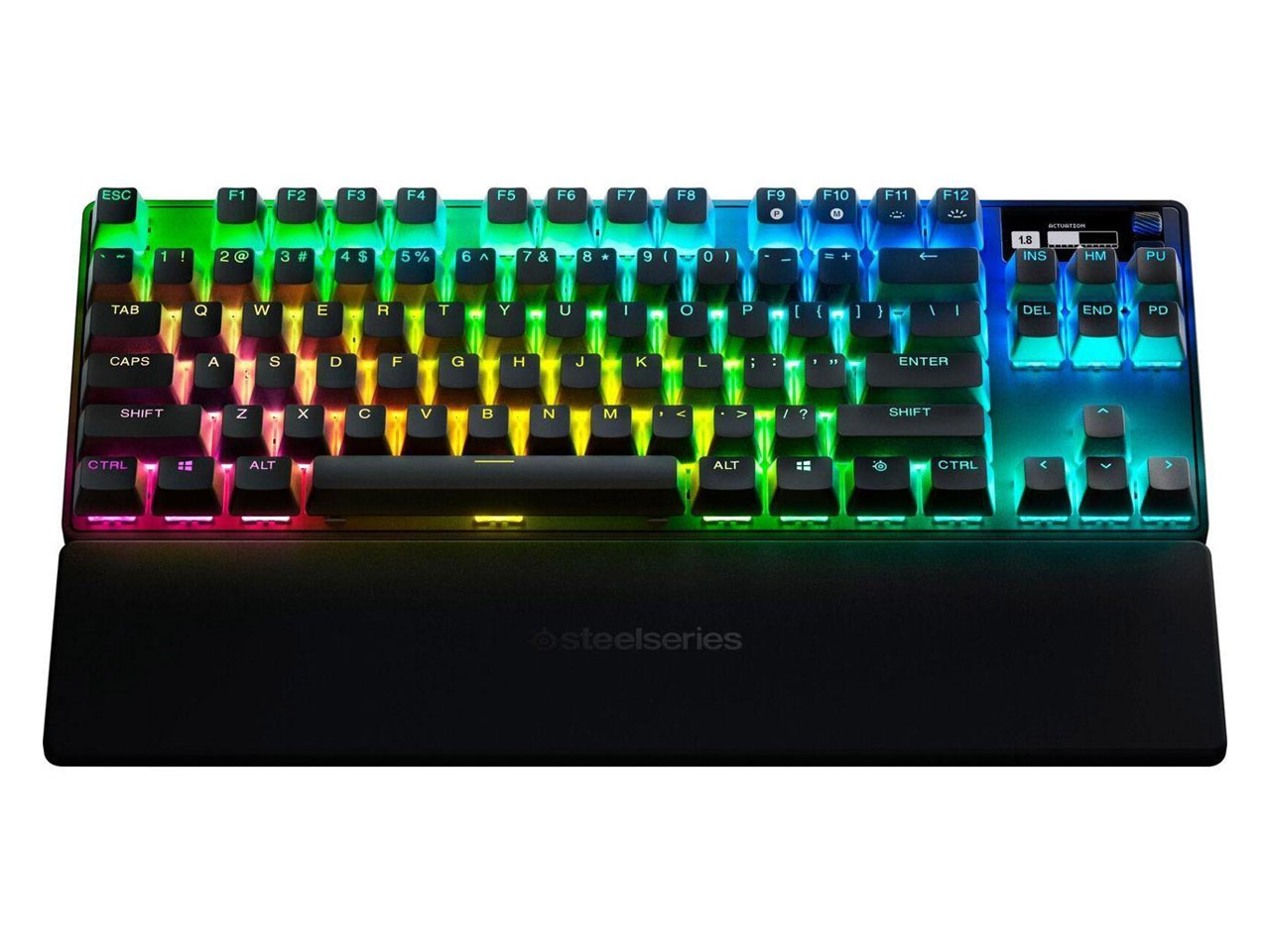Best wireless gaming keyboards 2024: Best overall, best 60% and more


It wasn’t that long ago when “real” gamers would shun wireless keyboards, complaining about latency and interference. Those days are gone, and you can get a gaming board just as capable in wireless form as it is in wired. Unless you’re literally super-human, you’ll never spot the difference.
And gaming keyboard makers have catered to the desire to go untethered. Though they generally carry a price premium, wireless gaming keyboards boast the latest features and capabilities, from fancy RGB lighting to cutting-edge adjustable actuation. Here are the best on the market.
Why you should trust me: PCWorld has been the go-to name for personal computer news and reviews for over 40 years. And as the writer of this roundup, and the reviewer of most of the keyboards on this list, I can assure you that my picks have been thoroughly tested by people who are absolutely obsessed with keyboards.
Every single keyboard on this list has been used by an expert, put through its paces for features and reliability, and carefully considered against the alternatives. We’ve tested every facet of the boards, even programming and complete disassembly for those that support it. And there are plenty that we review that don’t make the cut, like the capable but expensive and poorly optimized Keychron Q1 HE.
For a more in-depth look at how we test keyboards of every kind, check out our dedicated article covering our keyboard review process.
Corsair K65 Plus Wireless – Best wireless gaming keyboard overall

Pros
Solid hardware Great value for wireless Tons of customization options
Cons
No wrist rest slightly awkward default layout
Why I like the K65 Plus Wireless
Corsair has been improving its designs for the last couple of years, incorporating more premium features and customization options. And it all comes together in the vastly redesigned K65 Plus, and does so at a shockingly low price.
This keyboard combines the popular 75% form factor, high-speed, multi-device wireless, high-quality switches, and hot-swappable key sockets, with Corsair’s typically good gaming pedigree. The result is a keyboard that does a lot, for a lot of users, for a relatively low price.
While the K65 skips a couple of exotic features like adjustable actuation or an OLED screen, and it doesn’t include a wrist rest in the box, it nails just about every other facet of design. It’s simply the best gaming keyboard you can get at the moment.
Who should buy the K65 Plus Wireless
Anyone who wants a high-quality keyboard with tons of options for customization, both hardware and software, will be pleased with this design. It also has some excellent bonuses, like PBT keycaps and a dedicated button for turning RGB on (or off, if you want maximum battery life).
The 75% form factor isn’t for everyone — you’ll have to look elsewhere, or wait for Corsair to offer more models, if you want a different format. It’s also considerably less “flashy” than other gaming keyboards, and doesn’t offer the heft and quality of a metal body
Read our full Corsair K65 Plus Wireless keyboard review
Alienware Pro Wireless – Best gaming keyboard for travel

Pros
Unique curvy body Great switches Dual wireless
Cons
Expensive Janky software No wrist resto wrist rest Best Prices Today:$269.99 at Dell Canada
Why I like the Alienware Pro Wireless
Dell’s Alienware sub-brand has made gaming keyboards for a long time, but they’ve really stepped it up for this wholly new design. The Pro Wireless incorporates feedback from pro gamers and custom keyboard fans in order to deliver a solid, compact product with great components.
It’s that compact, curvy body that gives it our nod for the best travel board. In addition to an incredible battery life (turn off the lights to make the most of it), the compact size and shape of the board means it’s practically begging you to throw it in a backpack for gaming on the go.
It doesn’t hurt that the Pro Wireless offers both 2.4GHz and Bluetooth multi-device wireless, with a USB-C dongle that’s both tiny and perfect for the latest gaming laptops or even mobile devices.
Who should buy the Alienware Pro Wireless
If you need portability, wireless options, and battery life over all other features, Alienware’s newest design fits the bill. While its software leaves a lot to be desired, once you get over its foibles it makes the best traveling companion of any gaming keyboard to date, easily fitting into almost any space without sacrificing capability.
Alienware demands a pretty penny for its flagship model, so if you’re looking for a bargain you might want to look elsewhere.
Read our full Alienware Pro Wireless keyboard review
Razer Deathstalker V2 Pro keyboard – Best low-profile wireless gaming keyboard

Pros
All the features of a big Razer board in a small size Comfy media controls Many connection options
Cons
Default mute is a bit tricky No wrist rest Best Prices Today:$179.99 at Amazon
Why I like the Razer Deathstalker V2 Pro
Low-profile keyboards are hard to find for gamers, since those designs tend towards the big and chunky. But Razer, ever the trendsetter, offers up the Deathstalker series as a throwback. It has all the gaming features of the more conventional BlackWidow, but with a slinky low-profile and wireless build that turns heads while delivering headshots.
In both full-size and TKL variants, the Deathstalker V2 Pro literally shines with Razer’s usual Chroma lighting and excellent Synapse software, plus some good fit-and-finish touches like a finger-friendly wide volume bar. But it’s the quality switches, hard to find in any low-profile design, that put it above the competition.
Who should buy the Razer Deathstalker V2 Pro
If you want all of Razer’s high-end gaming features without the heft, the Deathstalker is right up your alley. While I wish it came with a wrist rest and perhaps a 60% “mini” size option, it’s still an easy pick for the best low-profile gaming board on the market. Those who want a slightly cheaper board can get the wired, non-Pro version at a discount.
Read our full Razer Deathstalker V2 Pro keyboard review
Redragon K596 Wireless Keyboard – Best budget option

Pros
Low price Included wrist rest Long battery life Volume wheel
Cons
Ugly keycaps Can only program G keys No Bluetooth Best Prices Today:$74.99 at Amazon$79.99 at Gamestop
Why I like the Redragon K596
Gaming keyboards usually don’t come cheap, and that goes double for wireless models. Redragon is a company that thrives in the bargain bin, and the K596 offers up most of the options if its full-priced competition at under 100 bucks. It also manages long battery life, a fancy volume wheel, and even a column of dedicated macro keys. Not bad.
Note that this is still very much a budget model from a budget brand, so it’s missing some of the fit and finish of more expensive keyboards. For example, you can only custom program those five G keys on the left. But for anyone who needs a deal, Redragon delivers, and throws a wrist rest into the package.
Who should buy the Redragon K596
There are a surprising amount of wireless keyboards that claim to be for “gaming,” even on the budget side of things. But Redragon is one of the few that walks the wireless walk, with most of the bells and whistles you’d expect and performance that doesn’t lag behind. Note that this is one of the few boards on this list that doesn’t offer Bluetooth — a fair trade for the value.
Read our full Redragon K596 Wireless Keyboard review
Keychron Lemokey L3 – Best ‘custom’ wireless keyboard for gaming

Pros
Typical Keychron build quality Bluetooth and 2.4GHz wireless Lots of extras
Cons
No per-game programming No adjustable typing angle Takes forever to disassemble Best Prices Today:$214 at Keychron
Why I like the Lemokey L3
You might call the Lemokey L3 a more high-class kind of gaming keyboard, thanks to a design borrowed from parent company Keychron’s Q series. It has all the highlights of those excellent designs, like a heavy all-aluminum body and PBT keycaps, in a more gamer-focused package.
With Bluetooth and 2.4GHz wireless, plus a few macro buttons on the side with plenty of alternate keycaps, the Lemokey looks a little more at home in a “serious” office setup.
It’s no slouch for gaming thanks to speedy linear switches, though programming is limited to one (very flexible) custom layout. If you want per-game profiles, you have to look elsewhere.
Who should buy the Lemokey L3
The Lemokey L3 is a fantastic value considering everything that it offers, but it’s still a very premium design, and would also double as a pretty good doorstop. Gamers who want a ton of flexibility in terms of hot-swap switches and keycaps, plus wireless capabilities, will be well-served here.
Even so, it’s a pretty pricey keyboard that sacrifices the more game-focused driver software of other boards on this list. If you want dedicated game profiles or a more “flashy” look, you’ll be better served by Corsair or Razer.
Read our full Keychron Lemokey L3 keyboard review
Apex Pro TKL Wireless keyboard – Best wireless analog board

Pros
Only wireless board in this niche Good software package
Cons
Chattery, uncomfortable switches Limited dual actuation Poor build quality Short battery life Best Prices Today:$221.82 at Amazon
Why I like the Apex Pro TKL Wireless
Analog keyboards, with their adjustable actuation key switches, are rare. Wireless analog keyboards are even more so, and in fact the Apex Pro TKL is the only one that fits the bill at the time of writing. If you demand the hypersensitivity and customization of adjustable actuation and untethered performance, this is the only keyboard that offers both.
But that doesn’t mean this is a great choice outside of that very particular niche. The Apex Pro’s magnetic swtiches are impressive, but noisy and chattery at the same time, and its built-in OLED screen is more of a party trick than an actually useful feature. I appreciate the included wrist rest…but at this price point, it can only do so much to help.
Who should buy the Apex Pro TKL Wireless
Gamers who need both adjustable actuation and wireless have one choice, even if it comes with a lot of caveats. Anyone who can live without the wireless should go for a Razer Huntsman, and if you don’t need the adjustable actuation, any other keyboard on this list is a better choice.
Read our full Apex Pro TKL Wireless keyboard review
What to look for in a wireless gaming keyboard
Pardon me for being obvious, but wireless keyboard shoppers should care about the same things they would for a regular keyboard…only wireless. Expect to pay a significant premium over wired designs, at least when looking at multiple models from the same category or brand. More personal and subjective features, like the feel of mechanical switches, might necessitate a trip to your local electronics store (or tracking down a handy key switch tester for trying dozens at once).
The questions and answers below will help you determine the features and qualities in a wireless gaming keyboard that will best meet your needs.
FAQ
1.
What kind of wireless should a gaming keyboard use?
Gaming keyboards tend to use RF wireless with a USB dongle, instead of a Bluetooth connection, which is more popular with modern “standard” wireless keyboards. That’s because it allows manufacturers to use a more reliable direct connection, with a higher polling rate — that means the connection between the board and your computer refreshes itself much more often, minimizing input lag. Some advanced models still include Bluetooth, along with fancier options like pairing multiple devices to the same USB dongle. Range typically isn’t a concern if you’re using a keyboard with a gaming desktop, but you might want to think about it if you have a gaming PC hooked up to your TV.
Most high-end wireless gaming keyboards can also use a direct wired USB connection, if you’re worried about wireless interference in a crowded environment.
2.
What kind of mechanical switches should I choose?
Modern mechanical keyboards come in a staggering array of switch varieties, from smooth and linear to loud and clickly, with tons of options for mechanisms and spring strength. The only real way to know which one you prefer is to try ’em out (retail store displays are great for this). That being said, more expensive keyboards tend to come with nicer, high-quality switches from name brands like Cherry and Gateron. For the ultimate in customization, track down a keyboard with hotswap switches, which let you swap out the switches for new and different ones whenever you want.
Recently more advanced types of switches have emerged, like optical and “laser” switches tripped by interrupting a beam of light, or “mag lev” switches that allow you to adjust the actuation force it takes to activate the key. These are interesting, but tend to lack actual utility (unless you have truly superhuman perception), and increase the price of keyboards phenomenally.
3.
Can I customize a keyboard’s keycaps?
Keycaps are the little pieces of plastic that sit on top of the switches — what your fingers press down on. Switching out the keycaps for a set of nicer ones, maybe made of better PBT plastic or themed after your favorite TV show, is a popular and easy keyboard mod. Some keyboard makers even sell their own upgrade sets. Keycaps with a Cherry MX-compatible stem will work with almost all modern mechanical switches, just make sure you find a set that matches the layout of your keyboard.
4.
What keyboard layout should I choose?
The layout of the keys on your keyboard varies more than you might think. Full-sized (100%) keyboards include a 10-key number area to the right of the arrow cluster, but gaming models often omit this in order to make more room for mouse movements, calling this the “10-key-less” or “TKL” layout. Some keyboards go even smaller, with 60% being the smallest that mainstream brands use, chopping off the Function row, 10-key area, and even the arrow keys (which have to be accessed via a Fn button). A few designs go even larger than the full layout, with an extra column or two of programmable keys for custom bindings or macros.
But there are a wide range of layout choices between these broad categories. Popular 65% and 75% keyboards are quite small, but still keep the arrow keys for ease of use, while smooshing down some others to make room. Ergonomic layouts on split keyboards try to emulate the curvy designs of some elaborate conventional keyboards. Which one you want comes down to use-case, available space, and perhaps more pertinently, taste.
These general layouts shouldn’t be confused with country- and region-specific key layouts for letters and numbers, like ANSI and ISO. Most popular designs are available in at least those two variants.
5.
How long does a wireless gaming keyboard battery last?
Unlike gaming mice, battery life generally isn’t a big concern with gaming keyboards. They’re big enough that there’s plenty of space for internal batteries that last for weeks, or even months, between charges. That is, unless you over-use that fancy RGB lighting with dazzling animation…in which case, it might last just a few days or hours. It’s best to turn off the lights if you don’t know when you’ll get your next charge. If it’s available, check the milliamp-hour (mAh) rating for the battery.
6.
Do I need LED lighting on a gaming keyboard?
Even budget gaming keyboards come with LED backlights these days, giving you a little extra help when hunting for keys in the dark. More elaborate models — especially from brands like Razer and Corsair — offer fully synchronized RGB light shows with elaborate animations. But unless you’re constantly playing in the dark and you can’t touch-type, it’s entirely cosmetic. It’s fun, that’s about it. You don’t need lights on a keyboard, it’s just a fun extra.
7.
What extras should I look for in a wireless gaming keyboard?
Keyboard makers are forever trying to one-up each other with extra features. Larger boards usually include dedicated media controls, and the nicer ones get a fully programmable wheel or knob, as well as hot-swap switch sockets that let you experiment with different types of key switches. An especially nice option is on-device memory, allowing you to keep key layout programs without running a driver program on each new computer. The most expensive boards have premium metal bodies, internal foam for sound reduction, and sometimes even gasket mounting, which gives the keys an extra bit of bounce by suspending them between two layers of foam or silicone.
None of these are really necessary, but they’re all nice and enhance the experience. Depending on your taste and budget, you can look for a board with a few extra features, or hunt down a super premium “endgame” design with all of them.
Author: Michael Crider, Staff Writer, PCWorld

Michael is a 10-year veteran of technology journalism, covering everything from Apple to ZTE. On PCWorld he’s the resident keyboard nut, always using a new one for a review and building a new mechanical board or expanding his desktop “battlestation” in his off hours. Michael’s previous bylines include Android Police, Digital Trends, Wired, Lifehacker, and How-To Geek, and he’s covered events like CES and Mobile World Congress live. Michael lives in Pennsylvania where he’s always looking forward to his next kayaking trip.
Recent stories by Michael Crider:
Game Pass just got Microsoft 365’dThis tiny folding keyboard is actually a full-blown AMD Ryzen PCLofree Edge review: A low-profile keyboard with supercar vibes




